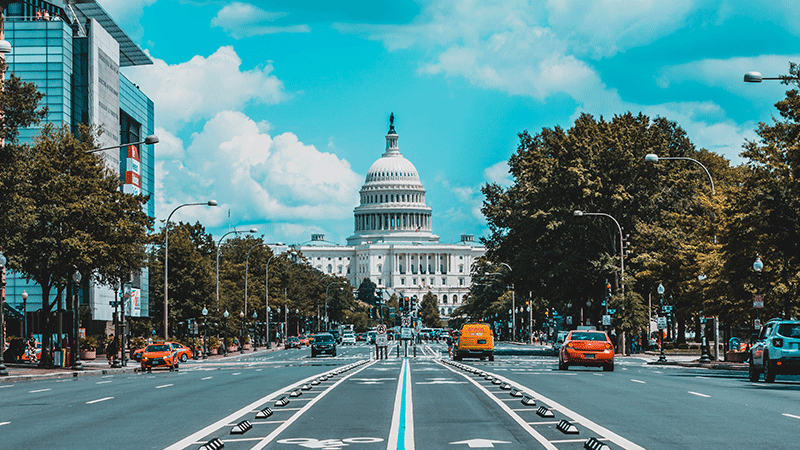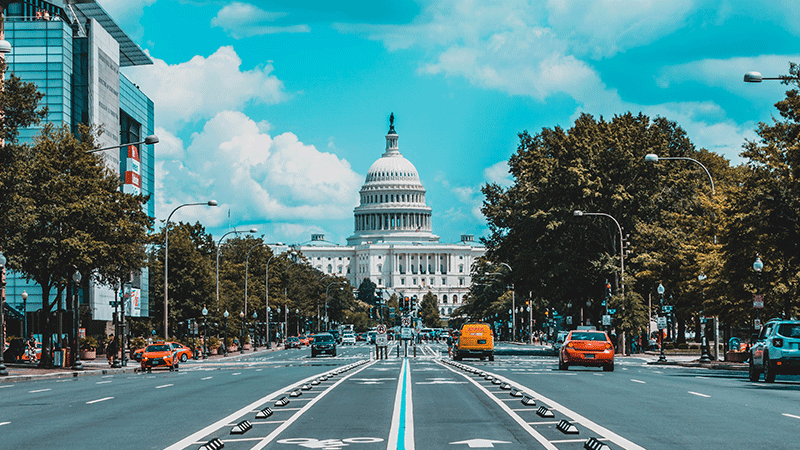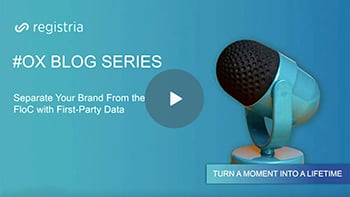Separate Your Brand From the FLoC with First-Party Data
The new future of customer identity in digital advertising imminently approaches, leaving companies anxious for more clarity and new strategies....
3 min read
Registria : Dec 15, 2015 4:05:29 PM

Many of our clients that manufacture safety-regulated products, such as helmets, car seats, strollers, etc. often ask if Photoregister is compliant in the eyes of the National Highway Transportation Safety Administration (NHTSA) and the Consumer Product Safety Commission (CPSC). So last week, in Mr. Smith style, we went to Washington D.C. to meet with both agencies on the topic of product registration and recall effectiveness.

While our clients have seen Photoregister deliver great results—including 3 to 5 times higher registration rates, more accurate data and a lower cost per registration—these executives take product safety and compliance very seriously and want to know if the agencies view Photoregister as a compliant method of registration under Federal Requirements for Consumer Registration.
We left Washington D.C. very impressed with how focused both agencies are on product registration and recall effectiveness. We had great conversations discussing how they are actively and collaboratively working with manufacturers to update regulations, and how new technologies like Photoregister can help in reaching more affected consumers quickly. Below are the top five things we learned as a result of these meetings:
1. Registration is constantly evolving with technology
During our meeting with CPSC, we learned that sections of the regulations overseeing electronic registration were purposefully written to be broad in order to accommodate new technologies as they arise. Because it can take up to two years to make a change to a regulation, it would prove difficult to change the regulation every time there’s a new technology or idea that improves results and could be included.
Photoregister is consistent with the Agencies’ broad intent of what falls under Part 1130.8 e. Photoregister acts as an “optional barcode” (manufacturers are still required to provide a postage-paid registration form) in which a “manufacturer may include a barcode, or other machine readable data, that when scanned would provide a direct link for the consumer to register the product.” The CPSC was pleased to see healthy gains in registration effectiveness and swift adoption of Photoregister by manufacturers. This is exactly the benefit policy-makers intended in including alternative email registration and optional barcodes in the regulations. Both NHTSA and CPSC agreed to provide official interpretations of the rules after reviewing Photoregister in more detail and also intend to use the results achieved by our clients to date to help inform forthcoming policy adjustments.
2. Direct notification is the ultimate goal
The CPSC maintains that direct notification is the ultimate goal in the event of recalls. Messages that reach consumers directly, for example direct mail or through text notifications sent via Photoregister, are twice as effective in remediating products versus indirect communications. Indirect notifications include broad advertising and publishing information on social media – which may not always reach the right consumers.
But, direct notifications are only as effective as the information is accurate. Today, people often keep their mobile phone numbers longer than they keep their addresses, making mobile registration a much more effective way for manufacturers to reach customers in the event of a safety update or recall.
3. Second-hand products are an area of significant concern
Many of the products under safety regulation are also handed down from owner to owner, sold through second-hand stores, or stay with a house as it’s sold to a new owner (e.g. appliances and HVAC units). When a consumer acquires a used product, there’s no way for manufacturers to reach them in the event of a safety recall. The agencies are definitely interested in solutions that help manufacturers connect with second-hand owners. Right now, brands are planning for permanent placement of the Photoregister camera icon on products giving owners and second hand owners alike the ability to instantly check for product safety alerts and register the products for direct notification.
4. Product safety data is abundant and available – connecting with it is key
Information on product safety recalls is highly available, but getting that information into the hands of consumers is the challenge. Important safety recall data is updated daily by the NHTSA at Safecar.gov and via API from CPSC. We are looking at ways to integrate this information into our Registria and Photoregister solutions so that this valuable, sometimes life-saving information gets to the consumers who need it.
5. Registration and safety are not an afterthought
In all honesty, I was amazed at how much emphasis and focus these agencies are placing on new ways to address registration and consumer safety. In response to new products (drones, for example) and new regulations (the new Tire Identification Number and registration system), the CPSC and NHTSA are not just enforcing old regulations – they are working hard to come up with new ideas and methods to make product registration more effective. It’s a great time to be involved in this movement.
We came away from these meetings thrilled Photoregister is primed to help serve the needs of regulated products and also multiple ideas on developing new features to better serve manufacturers and their product buyers. We’re excited to have been invited back to Washington D.C. in January to participate in a working session with manufacturers, retailers, influencers and government agencies to discuss registration and recall effectiveness strategies.
Please let us know if you have any questions or comments and stay tuned for updates and new product features in early 2016 that will help brands better connect with their customers.

The new future of customer identity in digital advertising imminently approaches, leaving companies anxious for more clarity and new strategies....

Online product registration has come a long way from the days of paper cards. Digital methods, like mobile or web-based, are now the preferred...

DENVER, CO--(Marketwired - Oct 5, 2015) - Photoregister, Registria's SaaS solution for mobile registration, was named the 2015 Direct Marketing...